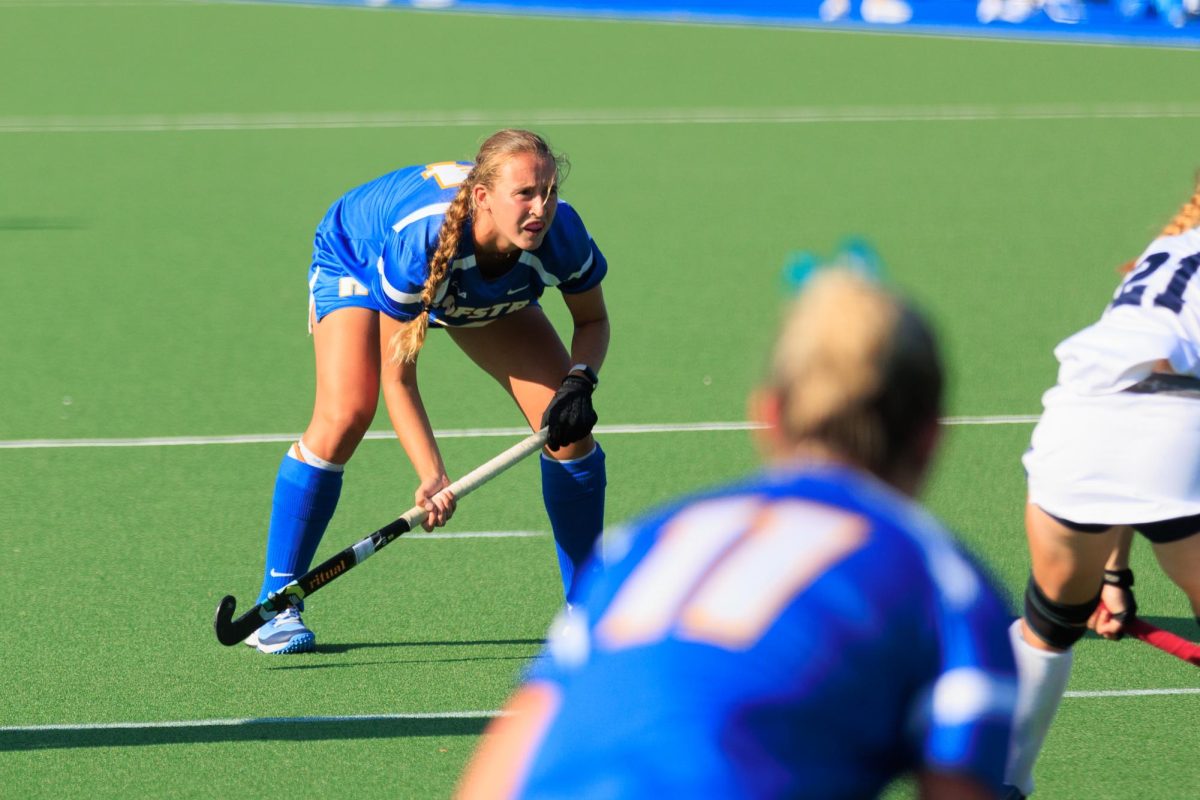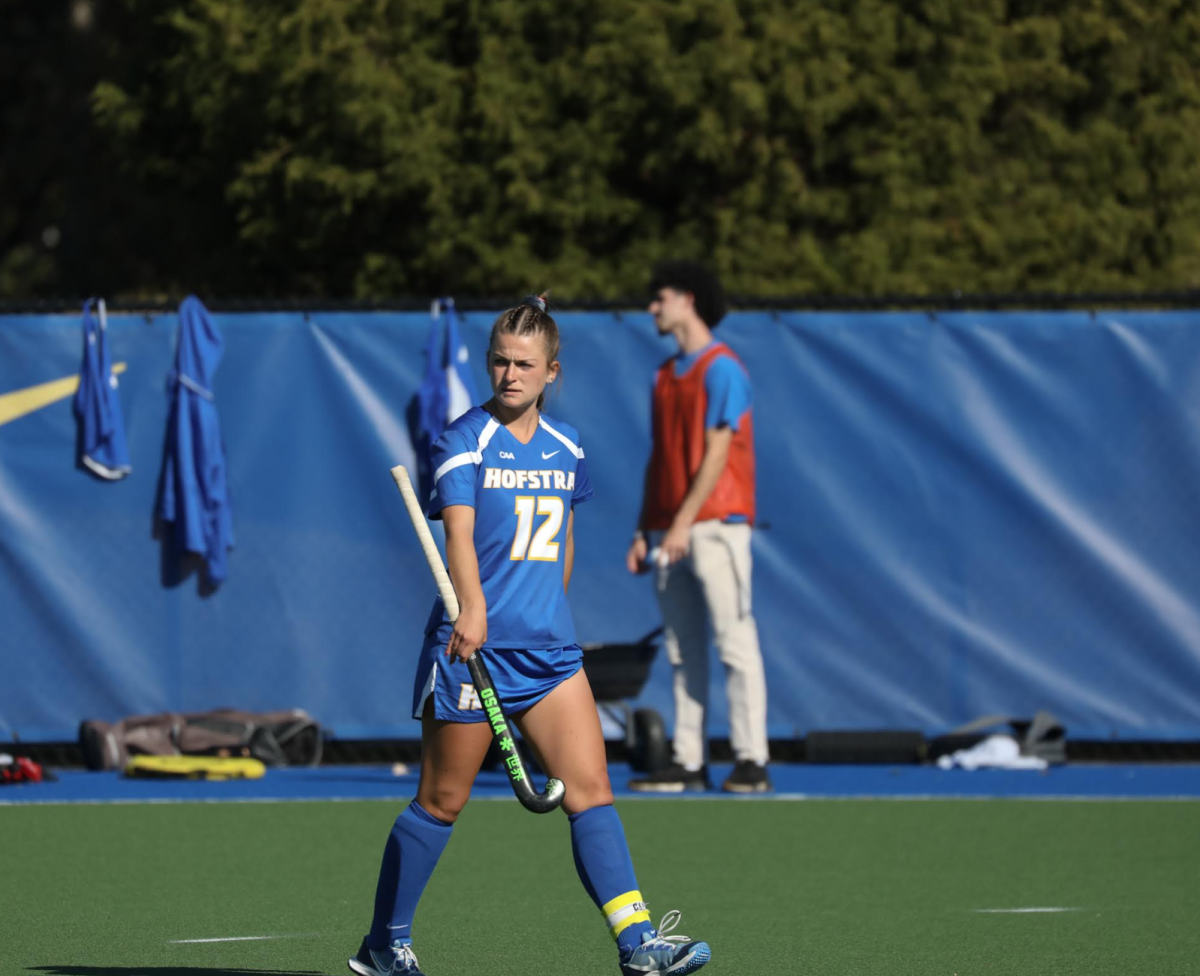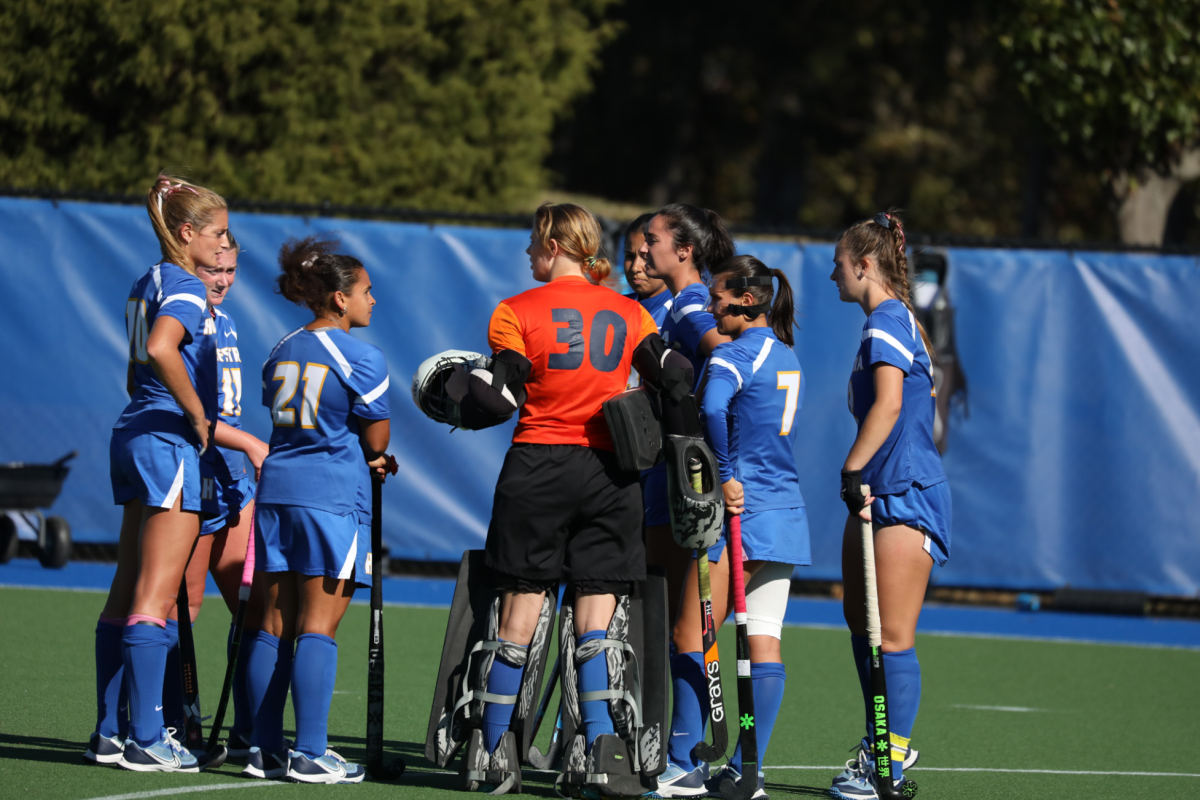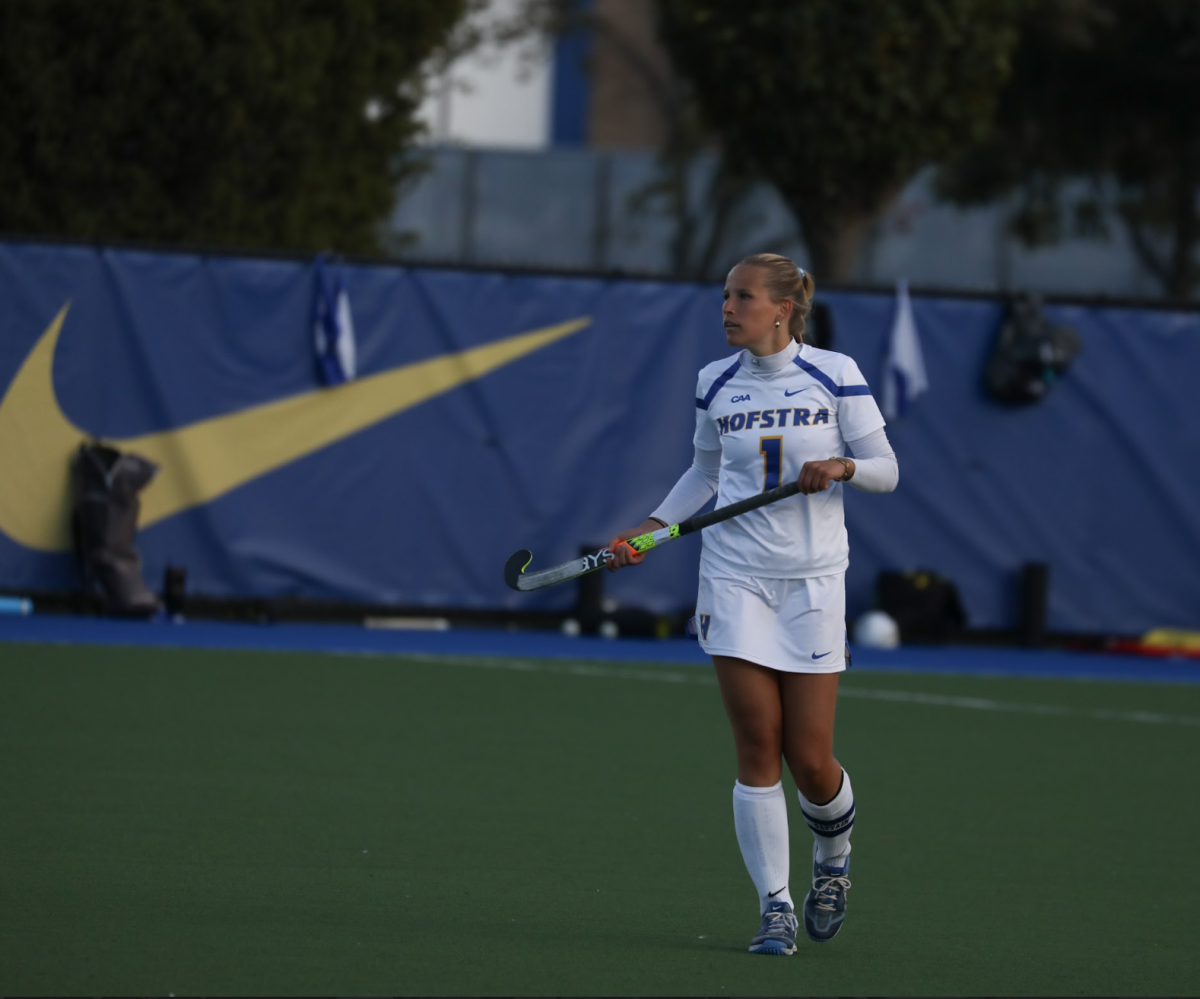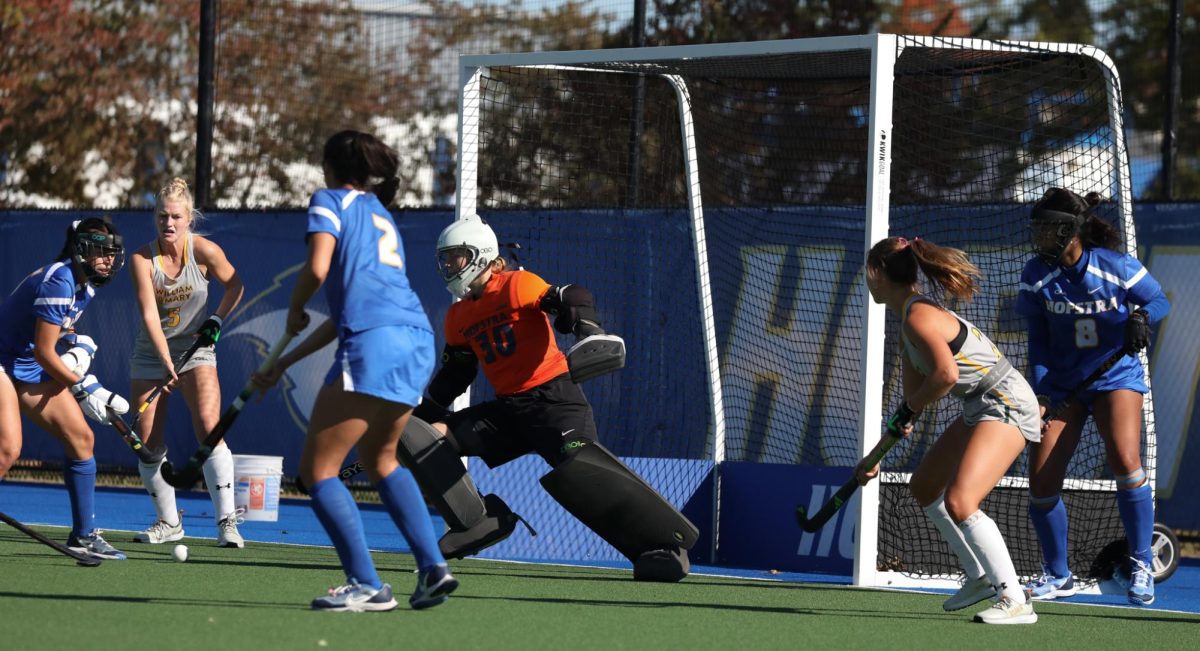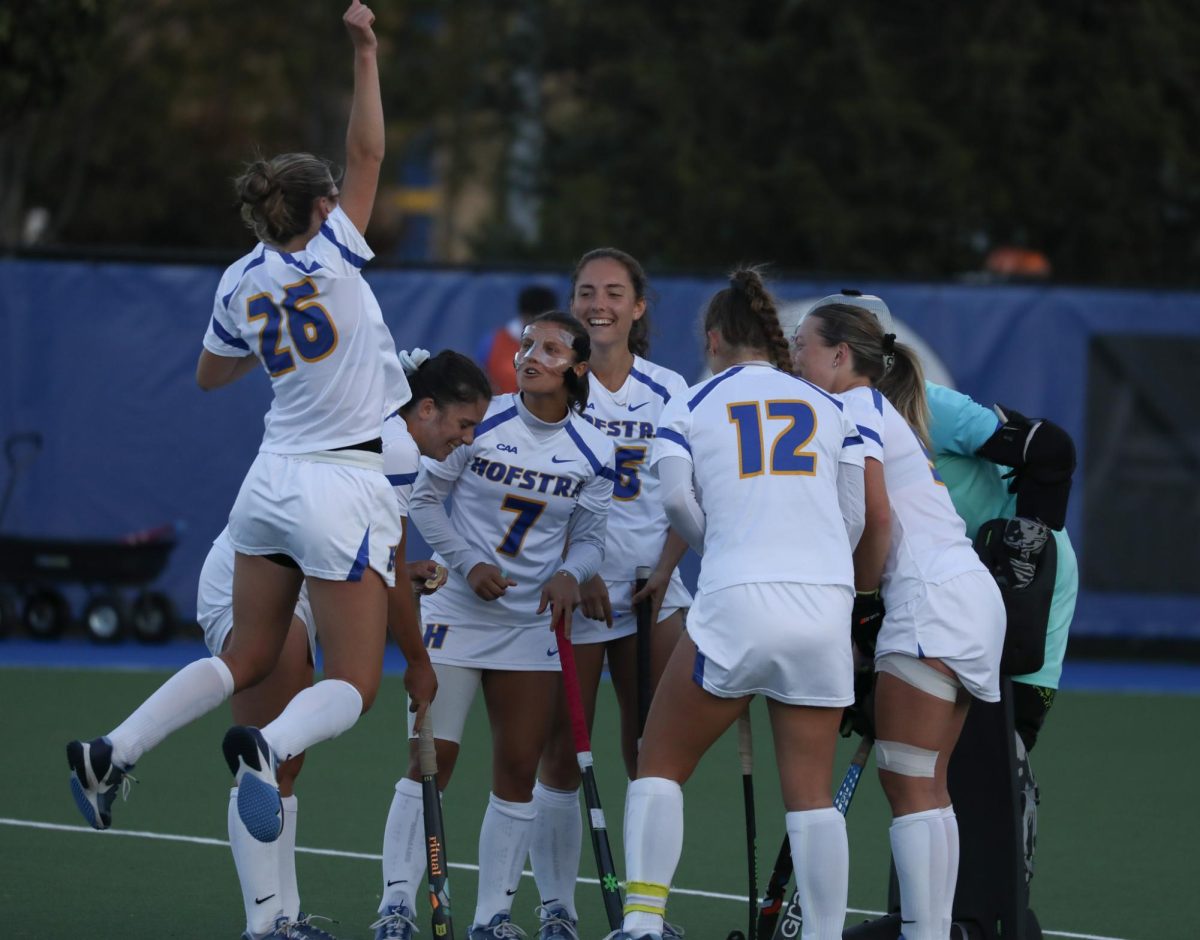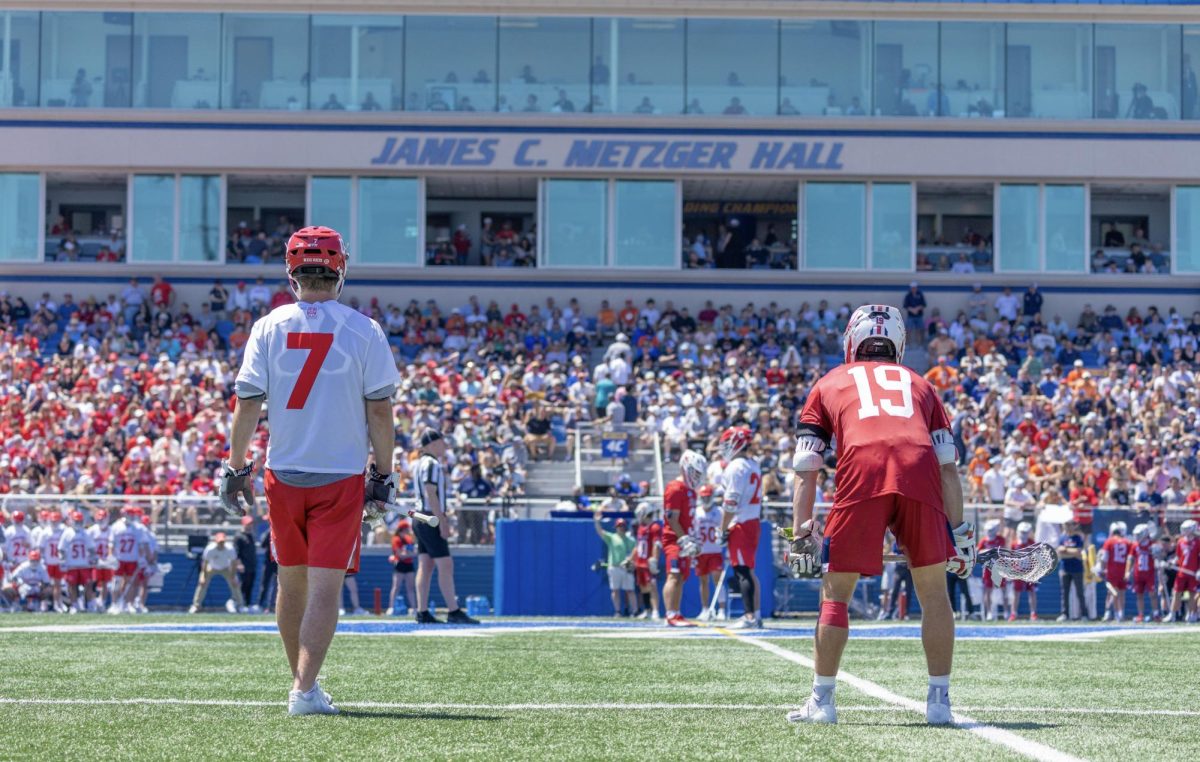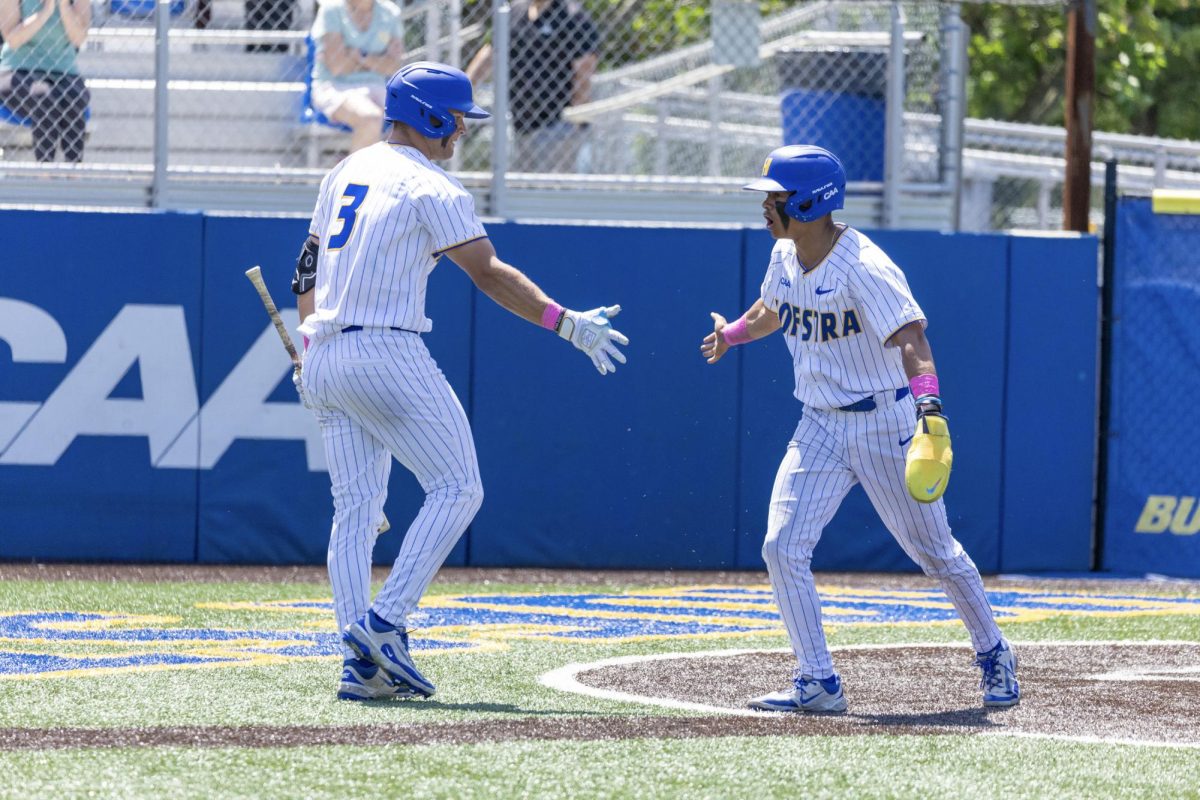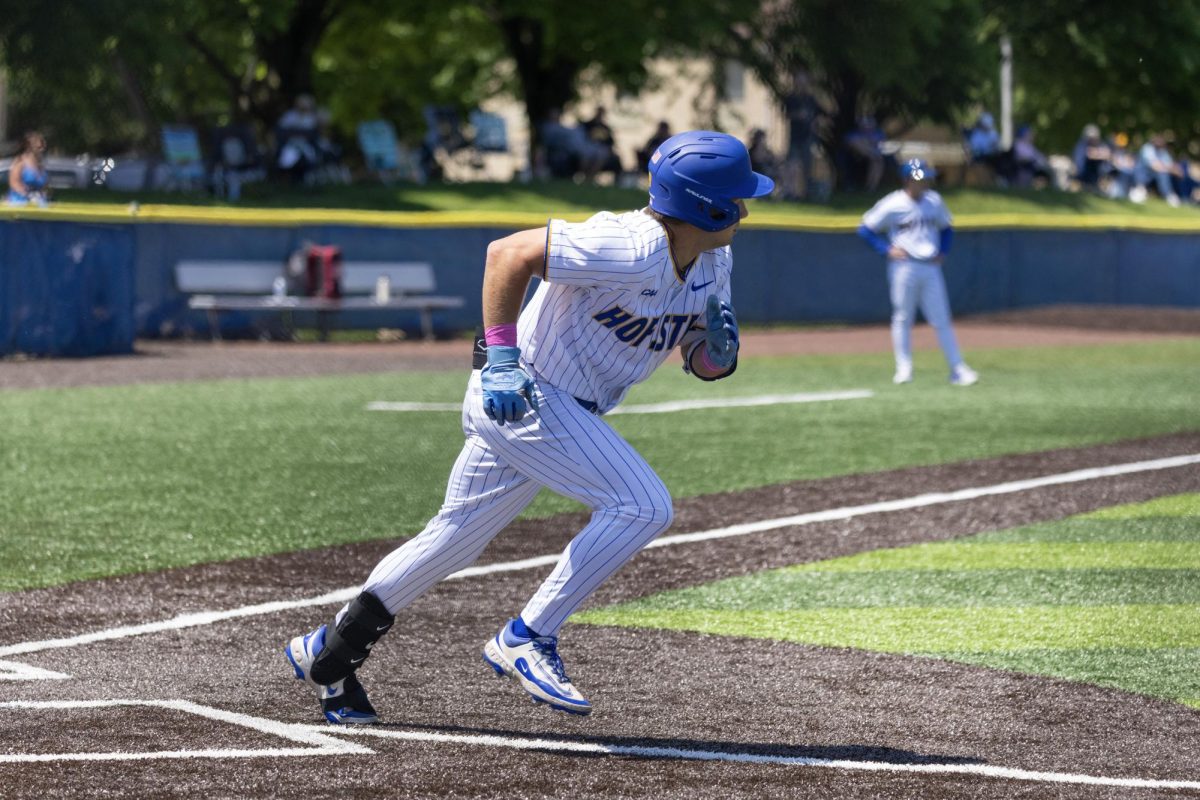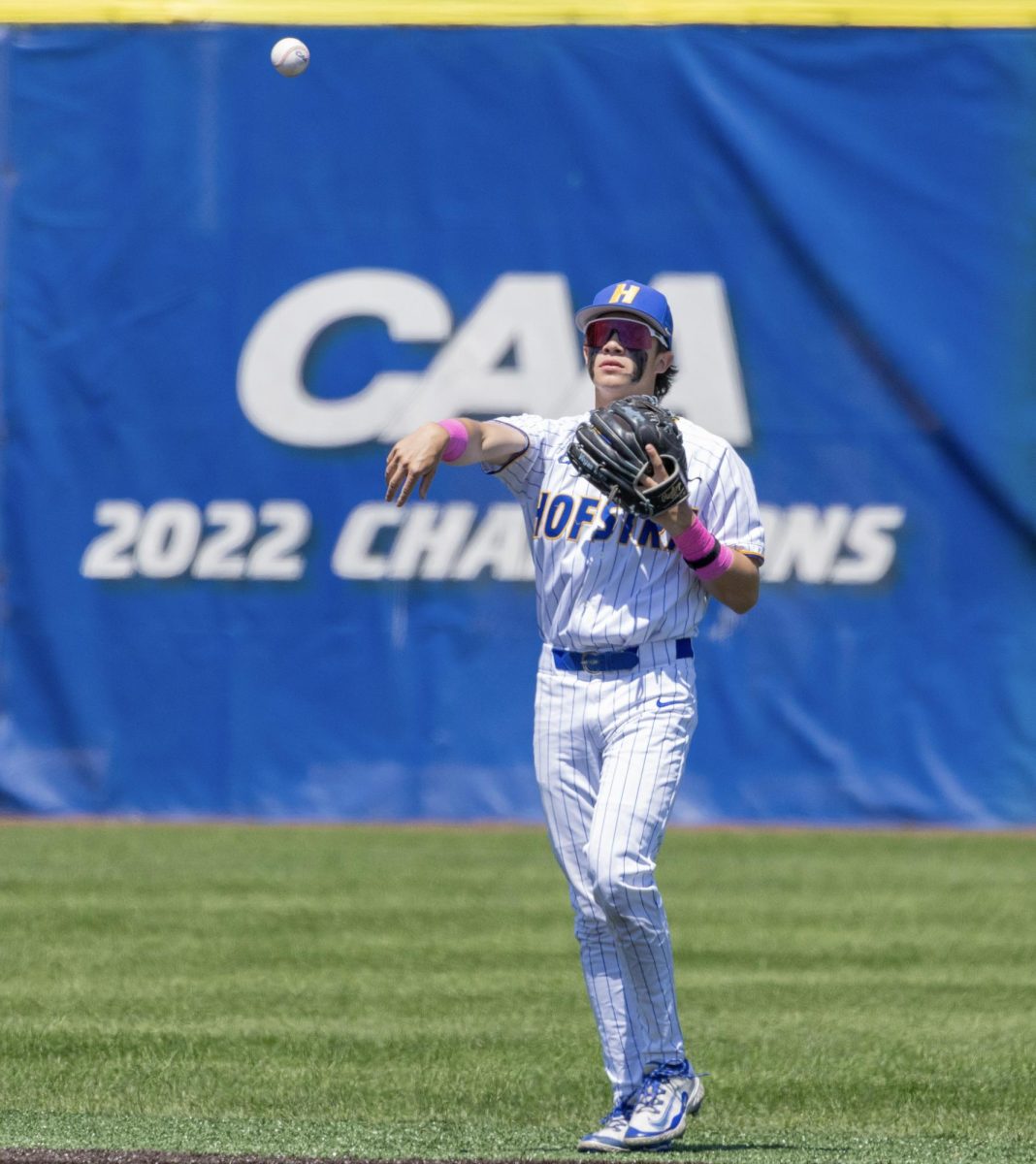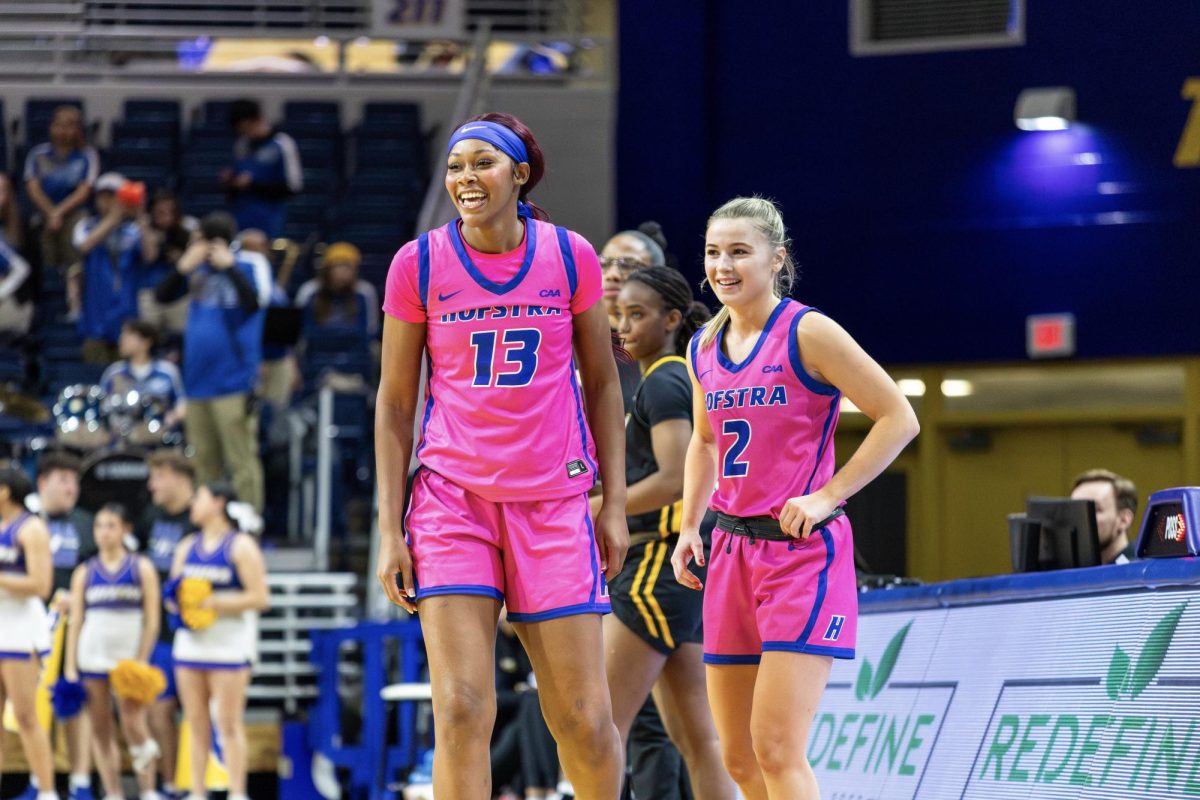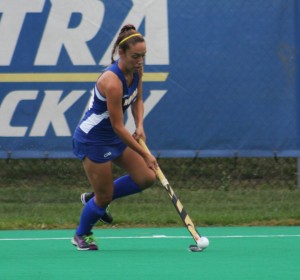
By Anders Jorstad – STAFF WRITER
The Hofstra Pride field hockey team is currently 8-3 on the season, an excellent start which includes their current six-game winning streak. Before their contest against the Quinnipiac Bobcats, I had the opportunity to interview Kathy De Angelis, the head coach of the team for each of the past 18 seasons, about the season, the state of the team, and what to expect going forward. She gave some terrific answers that included an in-depth look at how coaches select the right types of players for certain games and play styles.
ANDERS JORSTAD: You are of course on a six-game winning streak now after that three-game losing streak that the team had earlier. What are the major changes that you’ve seen in your team that has led to this winning streak?
KATHY DE ANGELIS: Well, I think with our team it’s as it is every year, it’s a process and things don’t happen overnight. You’ve got new players, you’ve got players that we’ve lost to graduation. We’ve lost the leading goal scorer in the league in Jonel Boileau, and we’ve learned to score in a number of different players, which I think is really exciting that it’s not about one goal scorer this year, it’s about the fact that Hofstra’s got a lot of key players that can score.
AJ: And what do you think needs to happen to keep that winning streak alive?
KDA: Well I think where we are right now, we’re in a good place with where the team is. As far as where we think we should be competitively, I think moving forward we have to continue to compete more and to compete harder. We still have a relatively young team in certain areas, but I think that the older players and the more experienced players have been key components. Certainly Charlotte Loehr, Leigh Maxwell-Smith have been really big voices, junior Colby Hussong. I think they’ve done a great job with the younger guys and helping them lead as well.
AJ: You mentioned Leigh Maxwell-Smith, obviously one of your key defenders on this team. How big has the defense been in those close victories that you’ve seen a lot of lately?
KDA: Well yeah, she’s got a very big role at the central back position and a lot of weight is put on her every single game, and she’s really leading on and off the field, and she’s been a key component to this back line. She continues to adjust to this position, and she steps to the challenge every single game, she wants to be better and better.
AJ: What has impressed you the most this season? Maybe something that you didn’t expect to see from your team that has really surprised you in a good way?
KDA: Well I think one of the things is that they themselves have been very accountable for their own personal performance. The leadership that we have, of course we have great leaders. Charlotte Loehr and Colby Hussong lead as far as the main captains go but there are many more leaders on this team, and having that type of leadership from more players, makes the team feel accountable, and it’s not putting the blame or whatever it is on another player. They’re really truly very accountable for their own performance. I think it’s wonderful and I think it allows us to push harder and force the team, as far as a staff perspective, to force them into harder challenges during practices.
AJ: Are there any players in particular that maybe will go under the radar but have really impressed you with their play lately?
KDA: Yeah, I think there are a number of players that go under the radar, certainly in the midfield you have Emily Gallagher, who is one of the central midfielders who plays with Simca Shoen, the Rookie of the Year last year. She’s so important to our attack from her midfield position but Emily Gallagher plays side-by-side with Simca [Schoen] and they work really really well together. Emily Gallager doesn’t get all of the press and all of the light that I think Simca gets, but that does not dismiss all of the amazing work that she does. She’s just a non-stop worker and she’s such a component to that midfield position.
AJ: What are some of these things that you’re looking for in the last few non-conference games of the season? Obviously you have conference play coming very shortly but you’ve got some time to prepare and try out some new things, what are you looking for in these games?
KDA: That’s what we’ve been doing, we’ve still been continuing to implement different things such as our pressing game. We’ve tried some new things this week in particular and it worked outstandingly. My staff is doing a great job working on different pressing options which is going to be huge. We don’t want to press, for example, when we get into Delaware, we don’t want to press the same way that we’ve been pressing every single game this year. We‘ve got to have different types of systems that we use. I think we’re in a really good place right now because we’ve been able to use different systems, and they’re working. That’s the exciting thing about it. We know that we can change if needed and we can see what’s working for certain games and different presses work better for us than other games. So I think the good thing moving forward for these non-conference games is we continue to utilize different types of systems and pressing and still making some slight changes in the lineup here and there, but that’s definitely going to make us a stronger team going into conference play.
AJ: What normally goes into making those decisions into what types of systems you use? I’m assuming you guys watch video, but is there anything else that goes into making that decision?
KDA: I think there are so many different systems that you can have, it really is based on the particular players you have, how you run your press, where’s the speed on your team, where’s the possession players and which players move the ball well. Depending on the starting lineup and where players are, you’ve got players that possess a lot of speed or endurance, some have great explosion, some may not have that great of explosion but they’re smart. In the chemistry of it all, it’s just about balancing the team the best we can and that’s how you design your system.
AJ: Do you guys think that your team is in a better place this year right now than you were this time last year?
KDA: Yeah, unfortunately we’ve lost some big players such as Jonel Boileau, Holly [Andrews], and Marta [Penas] as well. We are much stronger than we were last year. I believe right now we are playing where we left off last year a few weeks back, but to kind of give you an idea that now we haven’t even hit the CAA’s. We know we need to really come together as a team and I think the other thing is that we do have great depth in the bench, and this is a very strong bench with a lot of talent and a lot of charisma, they’re very eager to continue pushing and having that type of depth on the bench makes a big difference in what happens on the field as well.
AJ: From what you can say, what aspect would you say this team is better in at this place than it was last year?
KDA: Tactically, we’re much brighter. I think when these guys were really young we had so many freshmen and sophomores. Now we’ve got more sophomores and juniors in these areas. To teach a tactical plan in general too, so many players have come from different towns, from different cities and different countries, when they were young it takes a while and it is a process where now we’ve had a good core of the starters returning for their third years in this junior class that they have really been able to adapt to change and different systems, and learn together too. It’s a process and it’s a teaching process, there’s a learning curve that goes all into this and I think now we can make adjustments tactically whereas when you’re younger it’s “Wow! Why are we changing this system? Why are we doing these things? This doesn’t make sense! This is not how I’ve played.” Now the receptiveness and eagerness to learn systems and really buy into that is something that we’re really seeing a lot more now and it makes our job as a staff a lot easier and we can put in new systems very easily.
AJ: And I’m assuming that there are some players that learn that kind of thing quicker than others.
KDA: Oh, sure. You’ve got a learning curve with every single player and that’s a good point that you make. Not that you have the brightest players and players who aren’t bright, it’s that you have players that are much more comfortable making a change and they’re much more confident. Then you’ve got a personality type with other players where you have a little bit more difficult time making that quick type of change. Not that they’re not bright, it’s just really trying to work with that type of an attitude, and everyone has a different personality and everyone learns differently. If we could go out there and show a press and everyone learns it all together it’s like “Wow! This is great!” But where would the coaching be? So there’s a lot that goes into that and teaching players however we have to teach certain players to understand systems and tell them why we are doing this and encourage them to ask questions back so that’s just what goes on with all of the X’s and O’s and trying to figure out a player and how they adapt to different systems.
AJ: Let’s just talk about the conference play coming up pretty soon. What are you looking forward to in conference play and what did you learn from last year?
KDA: Last year we really had a breakout year from what we had the year before which we knew was going to happen. In regards to the conference, the conference has so much parity. We went form being number one at one point and beating the number one team in Delaware, who won the CAA’s. We beat them down in Delaware, so we knew we had the talent but now the challenge is to try to sustain that through two 35-minunte halves with the talent that you have. That’s not easy to do, to try to keep a team playing at their highest performance. We really want to be able to peak as we hit the CAA’s so there’s still a lot of trial and error and there’s still a lot of different things. I think the exciting thing about the CAA is that at any given day, the top four and five or six teams have that opportunity to absolutely advance and win the CAA. I think there are a few teams like Delaware and James Madison who are having really good years again this year. We think everyone is beatable and it’s just a matter of us peaking and being at our best come next Friday when we open up against Delaware.
AJ: How big would you say the margin for error is during conference play?
KDA: There’s not much of a margin for error. One of the things that we’re not going to forget is the opportunity we had last year when it came down to the James Madison game. We outshot them and particularly in the second half, we came back and hit the post twice. They had two defensive saves. That’s how critical a margin of error can be. With just the miss of hitting the post twice and having those three absolutely amazing diving saves by James Madison, we were going to the championship, it was that easy. But we had also played very well to put ourselves in that position so there’s always that. We need to be peaking as we hit the CAA and using these final few games to prepare for Delaware.


